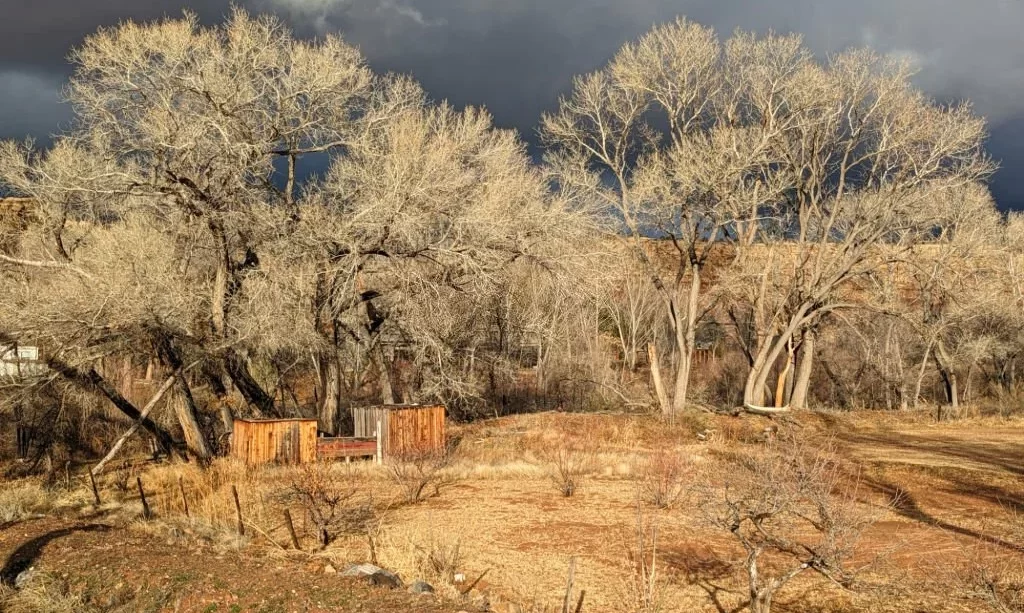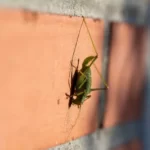Cottonwood trees, with their towering presence and distinctive, heart-shaped leaves, hold a unique place in the tapestry of our natural landscapes. Yet, their identity as nature’s shapeshifters is not solely defined by their grandeur. It is in the rhythm of shedding, a seasonal dance that involves both leaves and seeds, that cottonwood trees reveal their intricate role in the circle of life. This article embarks on a journey to explore the fascinating shedding cycle of cottonwood trees, illuminating the duration, patterns, and ecological significance of this phenomenon. By peeling back the layers of the cottonwood’s shedding process, we gain a deeper appreciation for the cycles of renewal that nature so elegantly orchestrates.
Cottonwood Trees – Nature’s Shapeshifters
In the world of trees, cottonwoods stand as remarkable shapeshifters. Their deciduous nature means they undergo profound transformations with the changing seasons. From the dense canopy of summer foliage to the exposed silhouettes of winter, cottonwoods engage in a dance of growth and renewal that reflects the passage of time.
These grand trees, belonging to the Populus genus, are renowned for their broad, toothed leaves, which are characterized by a distinct, flattened stem that allows them to flutter in even the gentlest breeze. While their leaves are a visual signature, it is their habit of shedding that adds a temporal layer to their identity. Shedding is a vital aspect of cottonwood trees’ life cycle, one that involves not only leaves but also the whimsical “cotton” seeds that drift through the air in a seemingly endless summer snow.
The Leaf Shedding Process
The annual leaf shedding process of cottonwood trees is an intricate ballet of nature. As the seasons shift, environmental cues play a pivotal role in triggering the shedding of leaves. Typically, cottonwood trees shed their leaves in response to seasonal changes and temperature fluctuations.
During this process, the leaves transform from vibrant green to various shades of yellow, revealing the splendor of autumn. As the days grow shorter and cooler, the cottonwood tree redirects its energy, withdrawing vital nutrients from its leaves and breaking down chlorophyll. This results in the dazzling display of yellow hues as the chlorophyll recedes.
As autumn transitions to winter, these leaves are no longer necessary. The cottonwood tree systematically severs the connection between leaf and branch, allowing the leaves to gracefully fall to the ground. This shedding not only conserves resources for the tree but also creates a carpet of organic matter that enriches the soil, supporting future growth in a perpetual cycle of life and renewal.
The Seed Shedding Process
In addition to the annual leaf-shedding spectacle, cottonwood trees engage in another captivating act: the shedding of their seeds. These seeds are colloquially referred to as cottonwood fluff or simply “cotton”. Their appearance is a whimsical one, resembling tiny, airy tufts of cotton that seem to float effortlessly on the wind.
The seed shedding process of cottonwood trees is a crucial element of their reproduction. This process typically follows the leaf-shedding phase and occurs later in the spring or early summer. The cottonwood tree produces small capsules, known as catkins, which contain numerous seeds enveloped in silky hairs. As these catkins mature, they release their seeds into the air.
What makes this phenomenon truly remarkable is that cottonwood seeds are uniquely adapted for wind dispersal. Each seed is encased in fine, silky filaments that act as miniature parachutes, allowing them to catch the breeze and travel great distances. This airborne journey, often likened to “summer snow,” aids in the widespread distribution of cottonwood seeds, enabling new trees to take root in various locations.
Shedding Timeline and Duration
The shedding cycle of cottonwood trees is a dynamic and sequenced process. While it may appear chaotic when observed on a single tree, there is a distinct order to how cottonwoods shed their leaves and seeds.
Leaf shedding typically takes place earlier in the year, during the autumn months. The transition from summer foliage to the golden hues of autumn is a captivating transformation, signaling the approaching winter. The actual leaf drop occurs in response to environmental cues, with leaves falling from the tree as their connection to the branch weakens.
Seed shedding follows the leaf-shedding phase, typically happening in late spring or early summer. This delay in seed shedding allows the tree to harness the energy it would have expended on producing seeds while it prioritizes the growth of new leaves. The “cotton” seeds, with their silky appendages, become airborne on the wind, and their journey mirrors the ongoing cycle of nature.
The duration of the shedding process for both leaves and seeds can span several weeks. This extended period contributes to the gradual, almost rhythmic transformation that cottonwood trees undergo as they prepare for the changing seasons.
Environmental and Geographic Variations
While the shedding process of cottonwood trees follows a general pattern, there can be variations based on local environmental factors and geographical regions. The timing and intensity of shedding can be influenced by climate, temperature, and even the specific subspecies of cottonwood tree.
In regions with milder climates and more prolonged growing seasons, the shedding cycle of cottonwoods may be extended, and the duration of leaf and seed shedding can differ from areas with harsher climates.
Additionally, the geographic distribution of cottonwood trees plays a significant role in shaping shedding patterns. Cottonwoods are prevalent along riverbanks and in riparian ecosystems, and the shedding process in these environments may be closely tied to water availability and seasonal flooding.
Understanding these environmental and geographic variations is essential for appreciating the nuanced shedding habits of cottonwood trees and the role they play in diverse ecosystems. It also underscores the adaptability of these trees to different environmental conditions and their importance in supporting wildlife and biodiversity.
The Ecological Significance of Shedding
The shedding cycle of cottonwood trees holds immense ecological significance in the intricate web of life. This annual act of renewal serves as a cornerstone for numerous ecosystems, particularly in riparian areas where cottonwoods are prevalent. The ecological impact can be observed in several key ways:
- Nutrient Cycling: As cottonwood leaves and seeds fall to the ground, they contribute to the enrichment of the soil. The organic matter from shed leaves decomposes, returning essential nutrients to the earth. This nutrient cycling supports not only the growth of new cottonwood trees but also a diverse range of plants, which in turn provide food and habitat for various wildlife.
- Wildlife Habitat: Cottonwood trees, with their generous leaf litter and the insects they attract, become hubs of biodiversity. Birds, insects, and small mammals find shelter, food, and breeding grounds within the canopy and fallen leaves. The shedding cycle nourishes not only the trees themselves but the entire ecosystem that relies on them.
- Natural Flood Control: In riparian ecosystems, cottonwoods are particularly effective in controlling flooding by stabilizing riverbanks with their extensive root systems. The shedding of leaves and the resulting soil enrichment support these stabilizing root systems, mitigating soil erosion during floods and improving overall water quality.
- Carbon Sequestration: Cottonwood trees play a role in carbon sequestration, capturing atmospheric carbon dioxide and storing it in their biomass. This ecological service contributes to climate change mitigation and underscores the importance of conserving these trees in various ecosystems.
Managing the Effects of Shedding
The shedding of leaves and seeds by cottonwood trees can have practical implications for property owners and individuals living in close proximity to these trees. While the ecological benefits are clear, managing the effects of shedding may be necessary in specific situations:
- Leaf Cleanup: Property owners may need to engage in seasonal leaf cleanup to maintain tidy landscapes and prevent blocked gutters. Raking, mulching, or composting leaves can be environmentally friendly ways to manage leaf litter.
- Seed Management: The “cotton” seeds can be visually striking as they drift through the air but may require cleaning from outdoor surfaces like patios and driveways. Using a leaf blower or broom to clear these areas can help maintain a clean outdoor space.
- Proper Tree Maintenance: Ensuring the health of cottonwood trees through regular pruning and maintenance can minimize the shedding of dead or diseased branches, promoting tree vitality.
- Consideration for Allergies: Some individuals may be allergic to cottonwood seed fluff, so it’s advisable to take precautions when it’s in the air.
Conclusion
In conclusion, the shedding cycle of cottonwood trees, involving both leaves and seeds, is a wondrous natural phenomenon that embodies the intricate interconnectedness of the natural world. From the enrichment of soil to the creation of wildlife habitats, cottonwood trees play a vital role in shaping ecosystems. The shedding of leaves and seeds is a testament to the tree’s adaptability, allowing it to thrive in various environmental conditions.
While the shedding cycle of cottonwood trees offers invaluable ecological services, it can also pose challenges for human living spaces. Responsible management practices can help mitigate these challenges and ensure harmonious coexistence with these majestic trees.
Understanding the shedding patterns of cottonwood trees provides a deeper appreciation for the role they play in the environment and the rhythms of nature. In the end, the shedding of cottonwood trees reminds us of the beauty of life’s cyclical patterns and the essential role that each species, no matter how unassuming, plays in the grand tapestry of Earth’s ecosystems.




